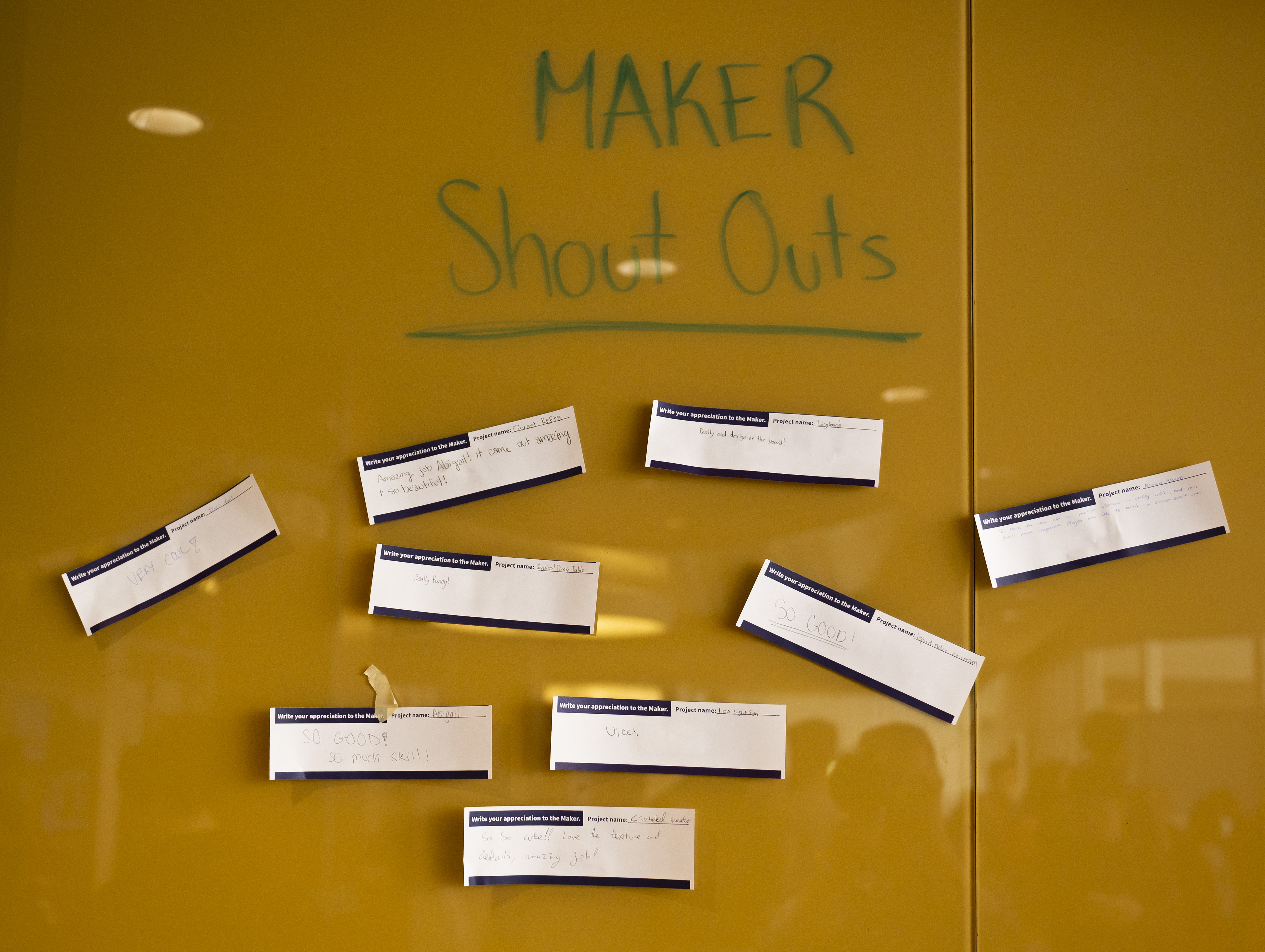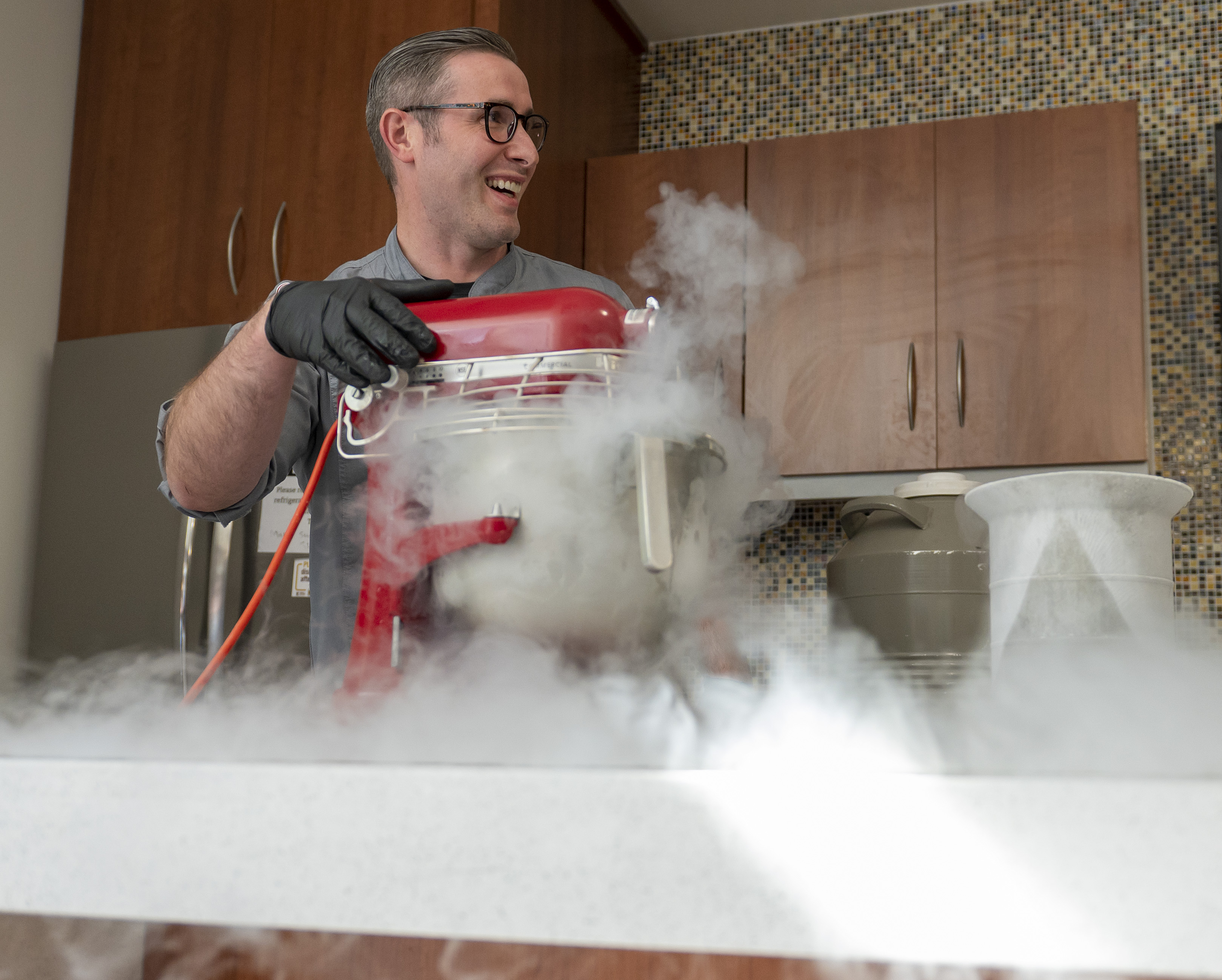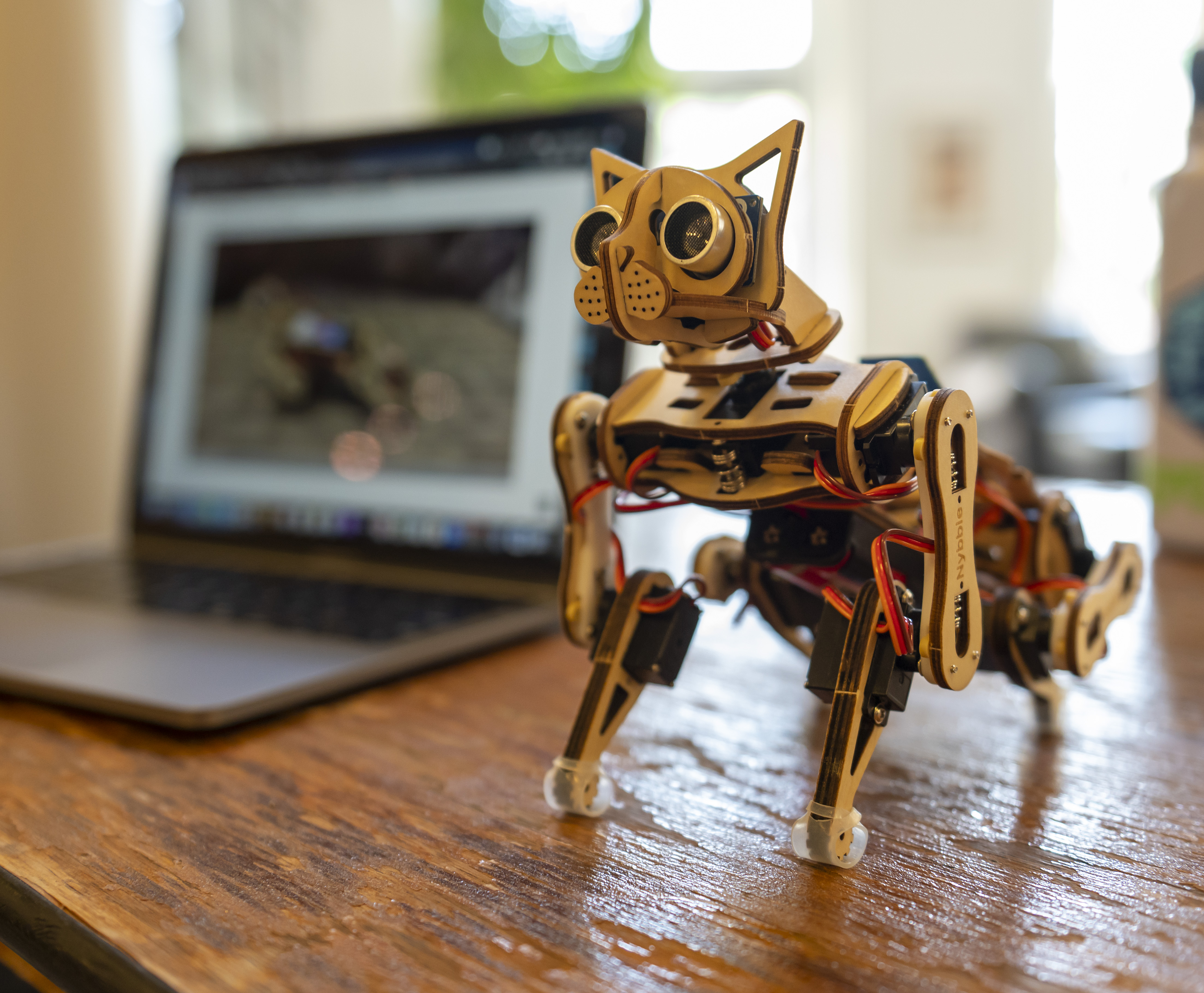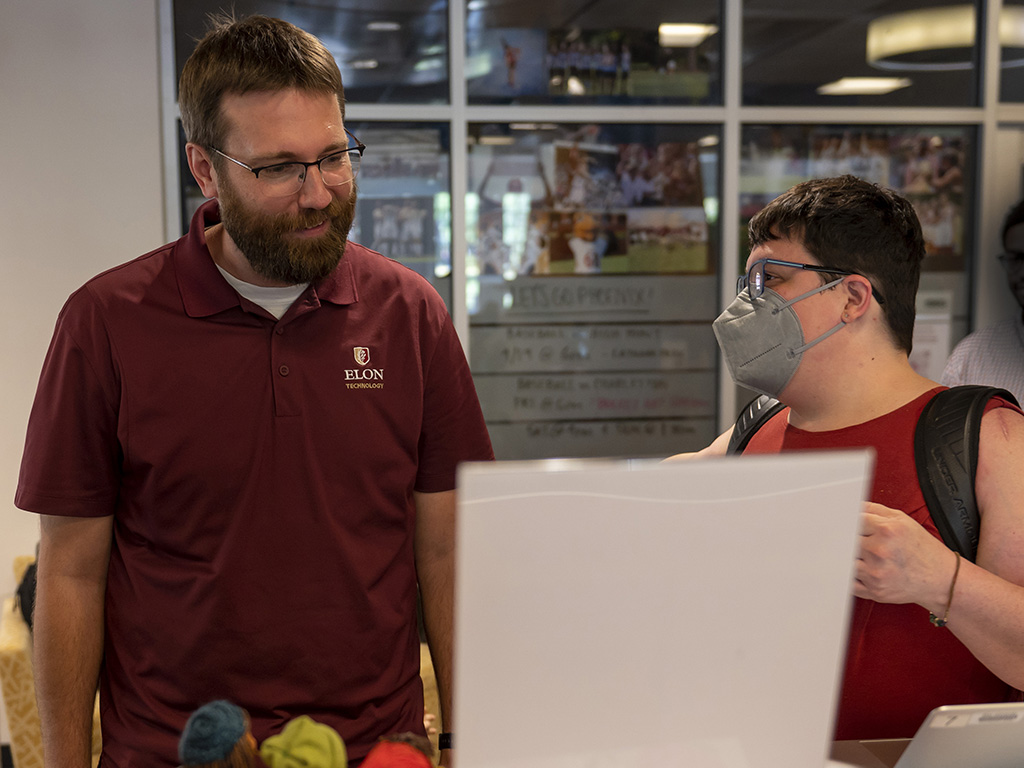More than 30 original projects were on display in Moseley Center on Wednesday, April 27 for the annual Maker Takeover.
A robotic cat, liquid nitrogen-made ice cream, a personal exhibit of ancient Roman sculptures and a student-led escape room. Those are not different aspects of a fever dream; it is just a handful of the 35 student-created projects from the annual Maker Takeover at Moseley Center.
“It’s an opportunity for students who are spending so much time on their projects to show off their progress and be proud of what they’ve been able to do,” said Dan Reis, senior instruction technologist and co-founder of the Maker Hub.
Excited to return to a full in-person gathering for the first time since 2019, Reis hopes the event will serve as a reminder of the work students carry out daily, whether it’s a part of their undergraduate studies or just a pastime. As an extensive display of creativity and initiative of students, he also hopes it will motivate others to actualize whatever idea they’ve been pondering over.
“I just want people to see what makes students excited and get excited themselves. If it’s their first introduction to the Maker Hub, maybe it’ll start a spark for them,” Reis said on Wednesday, April 27, as hundreds of the Elon community filed through the Moseley Center.

Twelve of the presentations were sponsored by Elon’s Kickbox program. The program challenges students to actively create products and inventions and provides them with the opportunity to find real-world applications for those respective interests, all while promoting critical thinking, resilience and problem-solving skills.
Along with the numerous student creations, the event had several recreational events, including a student-created escape room, “The Haunting of West Hall,” mini cornhole and ice cream made with liquid nitrogen by Elon Dining.
As a computer science and engineering major, junior Ben Trainum’s interests lie in computing and mechatronics. For his Kickbox project, Trainum took his interests and built an 8-bit breadboard computer.

In building a computer at its simplest form – yet still larger than a modern computer – to better understand how the actual “ones and zeroes” function. Through the hours of research and assembly for the project, Trainum said he was constantly learning something new, which was what he set out to do in the first place.
“At its core, it’s a learning tool and it has helped me learn a lot,” Trainum said. “I’ve probably spent more hours just looking at datasheets and technical papers … than I have building it. Building it is tedious but it’s the easy part. But making connections and learning why it all functions was the main goal.”
Anna Altmann’s ‘23 journey into STEM began with being introduced to robotics as a kid. Altmann strives to be the same catalyst for the next generation of STEM students with her programmable robot cat, Menace.

Made from wood and programmed to perform basic actions, such as walking, sitting and doing push-ups, Altmann is working with her mentor, Senior Lecturer in Computer Science Joel Hollingsworth to write code to get the cat to perform more actions.
“I hope to use this robotic cat to share STEM education with kids. I know that STEM can be intimidating to a lot of kids, so having a cat can be a more friendly way to introduce young students to it,” Altmann said.
Not only students were there to display their work. Assistant Professor of World Languages Tedd Wimperis teaches an Elementary Latin course. Toward the end of the semester, Wimperis has had his student explore ancient Rome through more than language but through art.
“The Maker Hub turned out to be a perfect ally in doing that,” Wimperis said. “There are a lot of 3D printed files of artifacts that museums have made publicly available. So, the students can pick an artifact, get it 3D printed and do a little research project on it.”

Maia Tice ‘22, a mathematics major, created the travel time board game for her project. The game encapsulates her interests in math, travel, problem-solving and board games.
With her core classes, she doesn’t feel like she has the opportunity to tap into her creativity as much as she’d like to. But with the Kickbox project and the Maker Hub, Tice has been able to take a topic that interests her and explore the possibilities involved with making it a reality on a larger scale.
“Elon has so many places for creativity and I’m grateful I found the Maker Hub,” Tice said. “This opportunity and seeing all these projects helps students realize that they can do anything they want to … and Elon’s resources do help you do that.”



